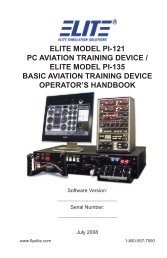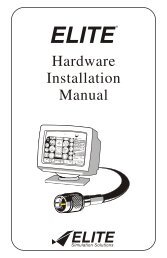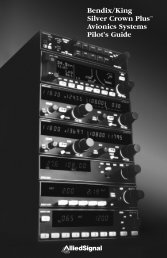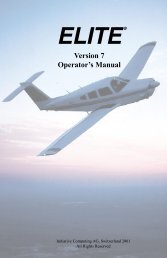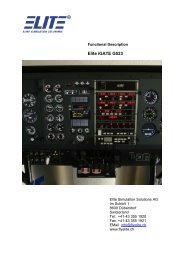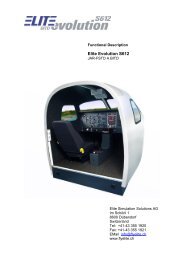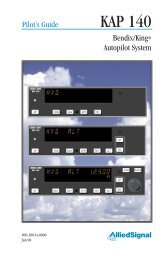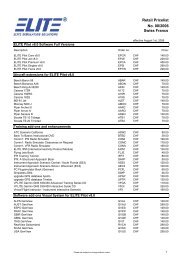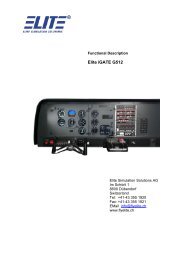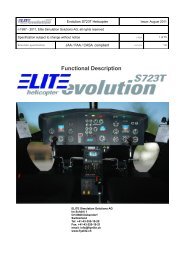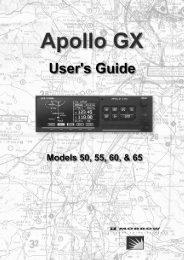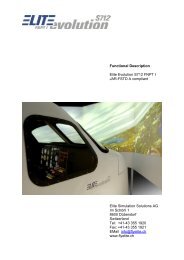Illustration Index - Elite Simulation
Illustration Index - Elite Simulation
Illustration Index - Elite Simulation
You also want an ePaper? Increase the reach of your titles
YUMPU automatically turns print PDFs into web optimized ePapers that Google loves.
<strong>Elite</strong> Evolution S923 FNPT II MCC<br />
©1990 - 2010, <strong>Elite</strong> <strong>Simulation</strong> Solutions AG, all rights reserved<br />
January 2010<br />
section page 36 of 58<br />
6 Description of <strong>Simulation</strong><br />
6.1 Aerodynamic and Performance<br />
version<br />
The aerodynamic flight simulation will widely reproduce the flight characteristics of a twin<br />
engine aircraft.<br />
The simulation of the flight performance is based on an accurate mathematics model. Full<br />
consideration is given to all variable surfaces and their effects. <strong>Simulation</strong> does include:<br />
� Variation of aircraft longitudinal, lateral and directional stability with altitude, airspeed<br />
and gross weight<br />
� Stall characteristics<br />
� 1-Engine in op. characteristics<br />
� Ground handling characteristics<br />
6.1.1 Wind Effects<br />
The effect of wind from any direction, at speeds from zero to sixty knots is realistically<br />
simulated and controlled by the instructor. The wind does show the correct effect on the<br />
ground track display during in-flight operation of the <strong>Elite</strong> Evolution S923 FNPT II MCC.<br />
6.1.2 Atmosphere<br />
Variation of temperature, pressure and density with altitude does follow the ISA standard<br />
model.<br />
6.1.3 On Ground Handling<br />
<strong>Simulation</strong> does include turning effects due to rudders, brakes and A/C wheel steering,<br />
representative flare and touch down effects. Also asymmetric thrust effects are simulated.<br />
6.1.4 Take-Off and Climb-Out<br />
With parking brake set and applied power, proper aircraft pitch effects are simulated. During<br />
take-off, heading control is accomplished via the use of wheel steering and/or rudder.<br />
6.1.5 Stalls<br />
There is full representation of the ”approach to stall” and the recovery from it. Stall is<br />
simulated by Cockpit instruments and associated flight characteristics.<br />
The influence of aircraft attitude, gross weight, configuration and altitude is also simulated.<br />
6.1.6 One Engine Inoperative Performance<br />
Full representation of 1-Engine in op. characteristics and performance are implemented.<br />
6.1.7 Landing<br />
The following is simulated during the landing phase:<br />
� Rate of descent versus speed, power setting and wind conditions<br />
� Control approach response<br />
3.1



